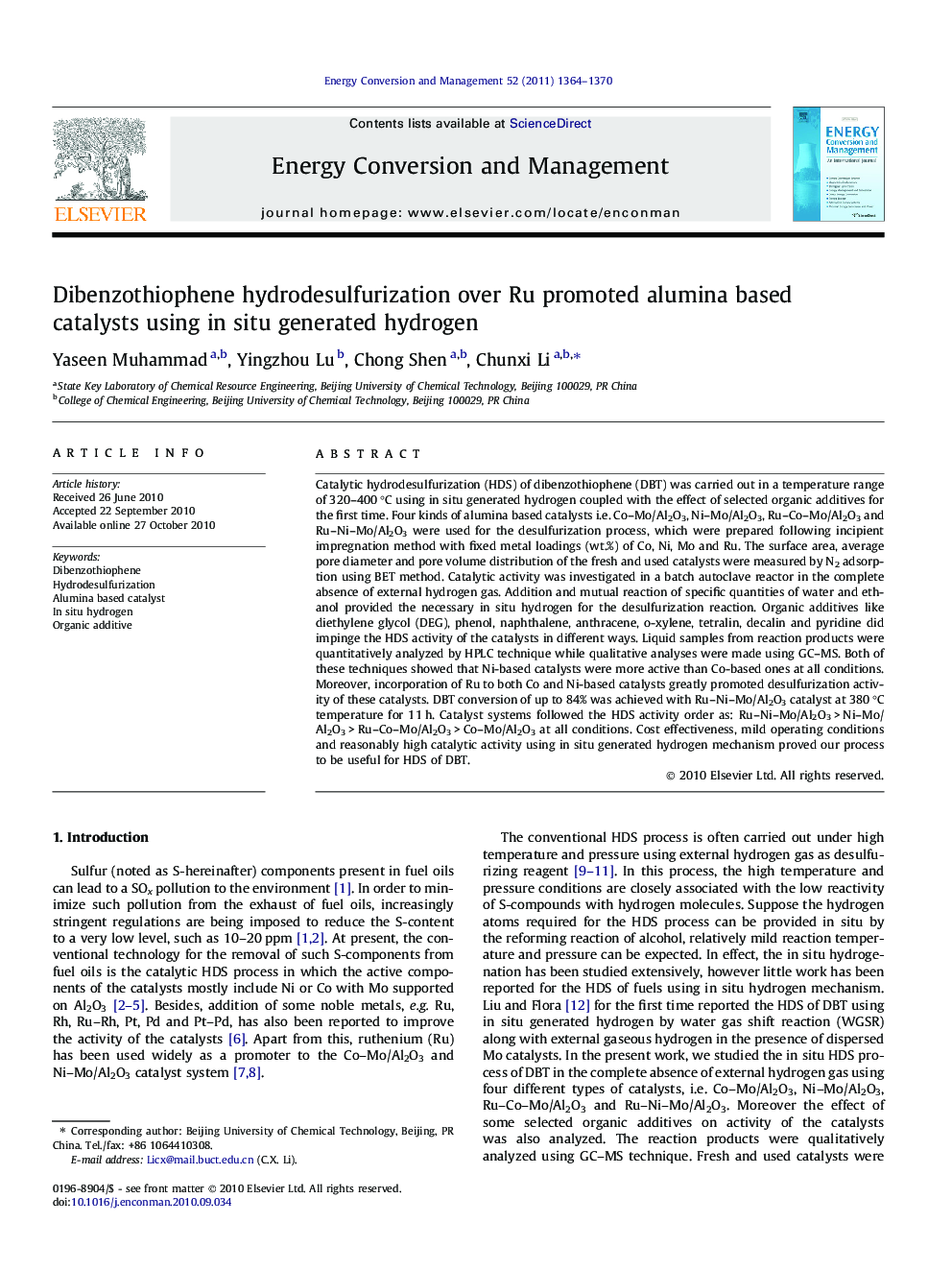| کد مقاله | کد نشریه | سال انتشار | مقاله انگلیسی | نسخه تمام متن |
|---|---|---|---|---|
| 764553 | 896990 | 2011 | 7 صفحه PDF | دانلود رایگان |

Catalytic hydrodesulfurization (HDS) of dibenzothiophene (DBT) was carried out in a temperature range of 320–400 °C using in situ generated hydrogen coupled with the effect of selected organic additives for the first time. Four kinds of alumina based catalysts i.e. Co–Mo/Al2O3, Ni–Mo/Al2O3, Ru–Co–Mo/Al2O3 and Ru–Ni–Mo/Al2O3 were used for the desulfurization process, which were prepared following incipient impregnation method with fixed metal loadings (wt.%) of Co, Ni, Mo and Ru. The surface area, average pore diameter and pore volume distribution of the fresh and used catalysts were measured by N2 adsorption using BET method. Catalytic activity was investigated in a batch autoclave reactor in the complete absence of external hydrogen gas. Addition and mutual reaction of specific quantities of water and ethanol provided the necessary in situ hydrogen for the desulfurization reaction. Organic additives like diethylene glycol (DEG), phenol, naphthalene, anthracene, o-xylene, tetralin, decalin and pyridine did impinge the HDS activity of the catalysts in different ways. Liquid samples from reaction products were quantitatively analyzed by HPLC technique while qualitative analyses were made using GC–MS. Both of these techniques showed that Ni-based catalysts were more active than Co-based ones at all conditions. Moreover, incorporation of Ru to both Co and Ni-based catalysts greatly promoted desulfurization activity of these catalysts. DBT conversion of up to 84% was achieved with Ru–Ni–Mo/Al2O3 catalyst at 380 °C temperature for 11 h. Catalyst systems followed the HDS activity order as: Ru–Ni–Mo/Al2O3 > Ni–Mo/Al2O3 > Ru–Co–Mo/Al2O3 > Co–Mo/Al2O3 at all conditions. Cost effectiveness, mild operating conditions and reasonably high catalytic activity using in situ generated hydrogen mechanism proved our process to be useful for HDS of DBT.
Journal: Energy Conversion and Management - Volume 52, Issue 2, February 2011, Pages 1364–1370